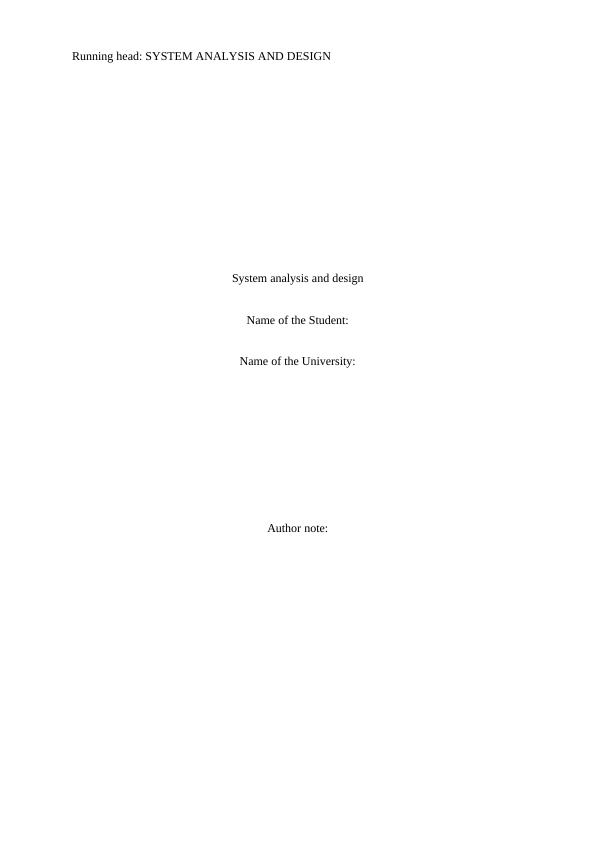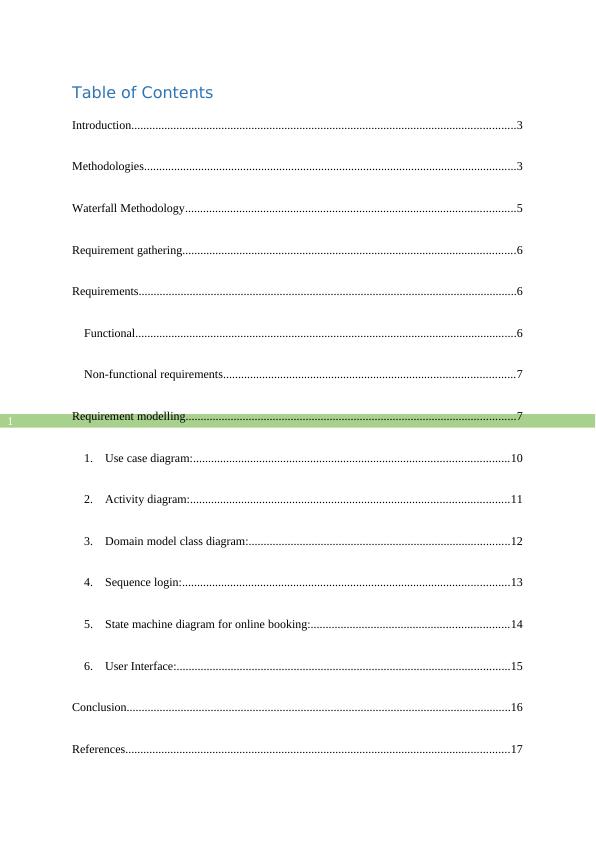System Analysis and Design
This file shows the example of the diagrams you need to prepare for 1. Use Cases: • • Use case— an activity that the system performs, usually in response to a request by a user. Use cases define functional requirements. Use case diagram— a UML model used to graphically show uses cases and their relationships to actors. Use Case Diagrams Symbols Use Case Example 2. Activity Diagram: Activity Diagram– describes user (or system) activities, the person who does each activity, and the sequential flow of these activities a. Useful for showing a graphical model of a workflow b. A UML diagram Activity Diagram Symbols Activity Diagram Example 3. Sequence Diagrams: • • • • A UML sequence diagram Special case for a sequence diagram • Only shows actor and one object • The one object represents the complete system • Shows input & output messaging requirements for a use case Actor, System, object lifeline Messages System Sequence Diagram (SSD) Notation: System Sequence Diagram (SSD) Examples: 4. Domain Model Class Diagram: • • • • Class • A type of classification used to describe a collection of objects Domain Class • Classes that describe objects in the
Added on 2022-11-22
About This Document
System Analysis and Design
This file shows the example of the diagrams you need to prepare for 1. Use Cases: • • Use case— an activity that the system performs, usually in response to a request by a user. Use cases define functional requirements. Use case diagram— a UML model used to graphically show uses cases and their relationships to actors. Use Case Diagrams Symbols Use Case Example 2. Activity Diagram: Activity Diagram– describes user (or system) activities, the person who does each activity, and the sequential flow of these activities a. Useful for showing a graphical model of a workflow b. A UML diagram Activity Diagram Symbols Activity Diagram Example 3. Sequence Diagrams: • • • • A UML sequence diagram Special case for a sequence diagram • Only shows actor and one object • The one object represents the complete system • Shows input & output messaging requirements for a use case Actor, System, object lifeline Messages System Sequence Diagram (SSD) Notation: System Sequence Diagram (SSD) Examples: 4. Domain Model Class Diagram: • • • • Class • A type of classification used to describe a collection of objects Domain Class • Classes that describe objects in the
Added on 2022-11-22
End of preview
Want to access all the pages? Upload your documents or become a member.




